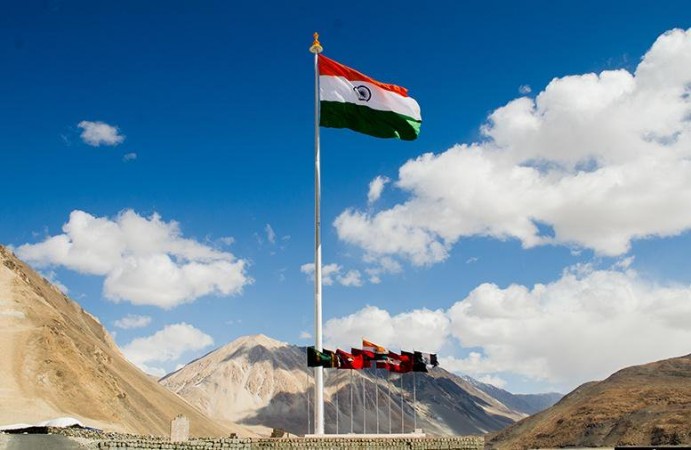
The National Flag of India, also known as the Tricolour or Tiranga, holds immense significance and pride for the nation. It represents the ideals and aspirations of a diverse and vibrant country. The design of the Indian National Flag is attributed to Pingali Venkayya, an Indian freedom fighter and visionary who conceptualized the flag's powerful symbolism.
The Journey of the National Flag:
The journey of the Indian National Flag began during India's struggle for independence from British colonial rule. As early as 1906, Pingali Venkayya came up with the idea of a national flag that would embody the spirit of a united India. Inspired by the vibrant colours and inclusivity of various Indian communities, he designed a flag with three horizontal stripes of equal width - saffron on the top, white in the middle, and green at the bottom. In the centre of the white stripe, he placed a spinning wheel, symbolizing India's rich textile heritage and the spirit of self-reliance.
On August 7, 1906, the flag was first hoisted during the All India Congress Committee session in Calcutta. It was met with resounding applause, and the flag was subsequently recognized as a symbol of India's freedom struggle.
Adoption of the National Flag:
It was on July 22, 1947, that the Constituent Assembly of India adopted the tricolour as the National Flag of India. The design remained almost identical to Pingali Venkayya's original concept, with only the spinning wheel being replaced by the Ashoka Chakra, a symbol of progress and righteousness, in the centre of the white stripe.
The adoption of the National Flag was a momentous occasion in India's history, as it signified the nation's emergence as an independent and sovereign republic. The Constituent Assembly, headed by Dr Rajendra Prasad, unanimously approved the design, and it was raised for the first time on August 15, 1947, when India gained independence.
Significance of the Colours:
Each colour in the National Flag holds a deep and symbolic meaning:
Saffron: The topmost stripe represents courage, sacrifice, and the spirit of renunciation. It symbolizes the selflessness and dedication of the people in the service of the nation.
White: The middle stripe signifies purity, peace, and truth. It reflects the quest for harmony and unity among the diverse cultures and religions of India.
Green: The bottom stripe represents fertility, growth, and prosperity. It embodies India's agricultural heritage and its constant progress towards development.
Ashoka Chakra: The blue Ashoka Chakra in the centre, with 24 spokes, represents the Wheel of Dharma, symbolizing the eternal law of righteousness. It is a reminder of India's commitment to progress and justice.
National Flag Adoption Day:
To commemorate the historic moment of adopting the National Flag, India celebrates National Flag Adoption Day on July 22nd every year. On this day, various events and ceremonies are held across the country to honor the significance of the tricolour in India's struggle for independence and its embodiment of national pride and unity.
People from all walks of life come together to pay tribute to the heroes who sacrificed their lives for the nation and to pledge their allegiance to the ideals represented by the National Flag. Educational institutions, government offices, and public places hoist the flag as a mark of respect and patriotism.
Conclusion:
The National Flag of India is not merely a piece of cloth; it is a symbol of India's rich heritage, unity, and sovereignty. The design and colours hold deep significance and reflect the collective spirit of the Indian people. National Flag Adoption Day serves as a reminder of the sacrifices made by the freedom fighters and the unyielding spirit of the Indian nation. It is a day of celebration, reflection, and renewed commitment to upholding the values and principles enshrined in the Tiranga.
Humanitarian Crisis in Conflict Zones: The Fallout of Land Use Disputes